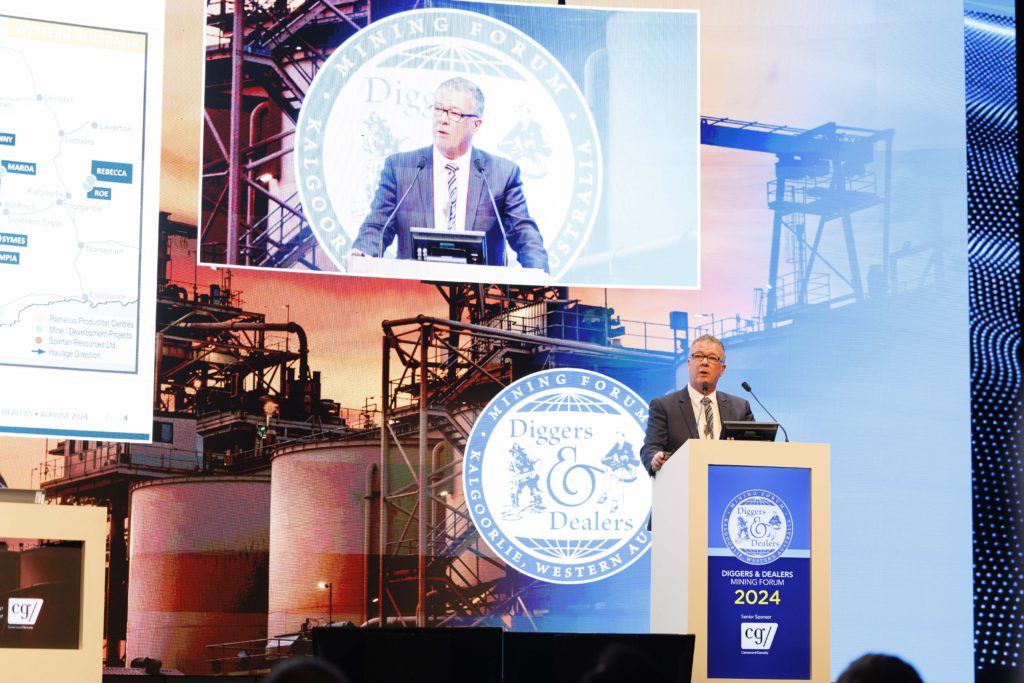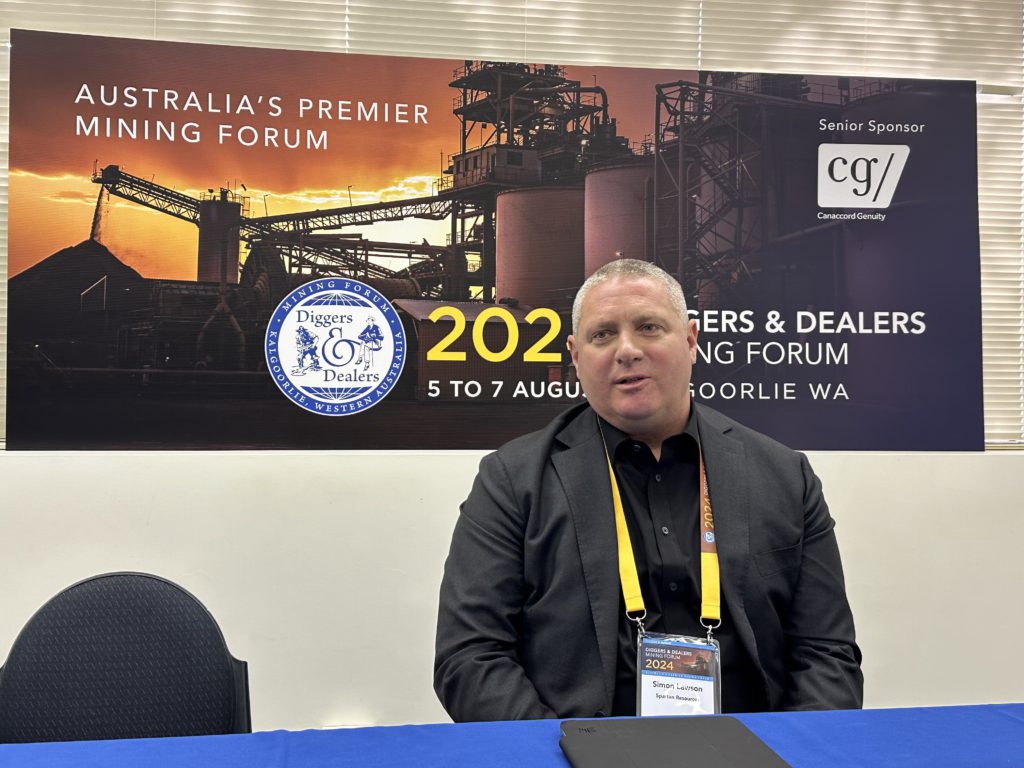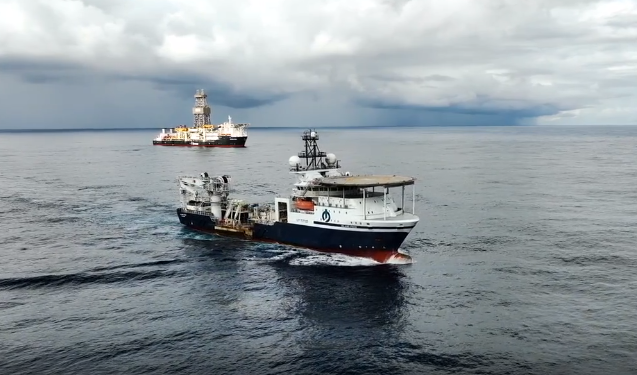Western Australia gold mining ripe for more (friendly) M&A

The ongoing consolidation in the Western Australian gold sector was a hot topic at the recent Diggers & Dealers Mining Forum, as record gold prices and a flurry of mergers and acquisitions over the past year have set the stage for further industry shifts.
Significant mergers have already taken place in the mid-tier producer space. Red 5 (ASX: RED) and Silver Lake Resources recently completed their merger, and just days before the conference, Westgold Resources (ASX: WGX) finalized its merger with Canada’s Karora Resources.
These deals follow earlier tie up discussions that both Westgold and Karora held with Ramelius Resources (ASX: RMS).
Westgold managing director Wayne Bramwell told MINING.COM the new floor for relevance was production of around 400,000 ounces of gold per annum (ozpa).
“Under that number, you are fighting for relevance, and it’s that space which we’ve just jumped out of, where you were interesting, but probably less relevant to a wider audience,” he said.
Bramwell expects to see further consolidation among producers with annual production below the new threshold.
“The concept of remaining relevant is absolutely top of mind for some of these CEOs,” he said.
“Because the capital markets are shrinking in certain areas, you have to get a certain scale and a certain profitability to maintain that relevance.”
Despite walking away from Westgold and Karora, Ramelius does not feel pressured to grow solely for size. Managing director Mark Zeptner emphasized the need for profitability over production volume.
“It matters less about how many ounces you produce, but more how much money you make, and the margin, so I don’t think there is a number in terms of production profile that makes you any better than anyone else,” he told reporters on the sidelines of the conference.
Mid-tier ripe for consolidation
The WA mid-tier gold space is small and fragmented, which makes it the subject of constant consolidation rumours.
Duncan Gibbs, managing director of Gold Road Resources (ASX: GOR), described the sector as “collegiate”, with industry leaders frequently engaging in discussions that could lead to mergers.
“Most of the CEOs know each other and particularly when we do the overseas conferences, you’ll find there’s a little Aussie corner and all the CEOs are talking to each other,” he said.
“There’s a lot of areas where we collaborate on so conversations occur for things that might make sense.”
Leonora operators Red 5 and Genesis Minerals (ASX: GMD) are often linked by speculation, while Gold Road was recently rumoured to be in merger talks with Regis Resources (ASX: RRL).
Regis managing director Jim Beyer, while not confirming any specific discussions, acknowledged that the sector’s size makes such conversations common. “Everybody’s probably chatted to everybody,” Beyer said, stressing the importance of creating value for shareholders in any potential deals.
“We’re looking for value for our shareholders, so anything that we look at has to be valuable for our shareholders, not for the shareholders of the other party. Otherwise, I’m just transferring value from my shareholders to them,” he said.
Emerging targets
Among the most speculated targets for takeovers are De Grey Mining (ASX: DEG) and Spartan Resources (ASX: SPR).
De Grey’s Hemi gold discovery in the Pilbara, set to produce 530,000 ounces per annum at competitive costs, has attracted interest from major global players like Barrick Gold (TSX: ABX), Newmont (NYSE: NEM), and Agnico Eagle Mines (TSX: AEM).
De Grey is fully funded to build the A$1.34 billion ($880 million) Hemi mine, which will produce gold at all-in sustaining costs of A$1,295 an ounce over the first 10 years.
Gold Road holds 17.3% of De Grey, positioning itself strategically for any potential takeover. Gibbs said the company was happy to “have a seat at the table”.
“I think if you look at it in the longer term, De Grey or Hemi is likely to end up in the hands of one of the global majors – it’s the asset that they all want,” he said.
The other developer sparking M&A speculation was Spartan Resources (ASX: SPR), owner of the high-grade 2.48 million ounce Dalgaranga project, particularly following the recent arrival of Ramelius on the register as an 18% shareholder.
Zeptner and Spartan managing director Simon Lawson separately confirmed they had met since Ramelius’ A$180 million share raid in early July.

With a market capitalization of A$1.4 billion, Lawson admitted the company was “quite pricey” for an explorer but could see the potential for Dalgaranga to rival the size of Ramelius’ neighbouring 6moz Mt Magnet operation.
“I don’t think there is a world where I would give it up unless we were rivalling that kind of size, and I think that’s where our shareholders’ heads are at,” he said.
Large caps focus elsewhere
While consolidation continues among mid-tier producers, larger companies like Gold Fields and Northern Star Resources are focusing on different strategies. Gold Fields, rumoured to be actively looking at opportunities in WA, confirmed its expansion intentions this week, with the acquisition of its Windfall joint venture partner Osisko Mining.
“There is a lot of opportunity for consolidation, not just here, but globally,” Gold Fields CEO Mike Fraser told MINING.COM.
“I think that’s going to take place, but what we are doing right now is, because we have got a very strong exploration program, is partnering with juniors as well to find new opportunities through the drill bit.”
Gold Fields’ most recent exploration deal was a A$13 million farm-in with Killi Resources (ASX: KLI), announced in May.
Northern Star Resources (ASX: NST), now Australia’s largest listed gold miner with a market capitalization of A$16.4 billion, remains committed to reaching a production goal of 2 million ounces per annum by the 2026 financial year.
Managing director Stuart Tonkin confirmed the company is currently focused on its growth path. “We always look at things, but we’ve just got some really compelling organic projects which have taken our attention,” he said.
Evolution Mining, the country’s second-largest miner with A$7.6 billion market capitalization, has been active on the corporate front, having completed 11 deals – acquisitions and sales – in the 12 years since its formation.
It most recently paid A$400 million for 80% of the Northparkes copper-gold mine in New South Wales in December 2023 and A$1 billion to buy out Glencore’s interest in the Ernest Henry copper-gold mine in Queensland in late 2021.
Evolution executive chairman Jake Klein described the $375 million purchase of the Red Lake mine in Canada in 2020 as its most challenging acquisition and one from which it “wears a lot of scars”.
Klein said Evolution remained confident of Red Lake’s future, but appeared to rule out further deals for now.
“I think our shareholders really want us to deliver operational predictability and reliability more than more acquisitions at this time,” he said.
More News
Russia, US start talks on rare earth metals projects in Russia, Putin envoy says
Putin has offered the US, under a future economic deal, to jointly explore Russia's rare earth metal deposits.
March 30, 2025 | 01:06 am
Miner’s bid to tap seabed pits UN-backed regulators against Trump
International regulators condemned TMC’s move to circumvent their authority by seeking the Trump administration’s approval for seabed mining.
March 29, 2025 | 02:38 pm
{{ commodity.name }}
{{ post.title }}
{{ post.excerpt }}
{{ post.date }}



2 Comments
Alberto De Leon
There is an inaccurate statement in this article pertaining to the acquisition of Newcrest Mining by Northern Star Resources. Newcrest was in fact acquired by Newmont Corporation in late 2023, not by Northern Star Resources, as stated in this article.
Amanda Stutt
Hi Alberto, thanks for flagging this – it has been corrected.
Best,
Amanda